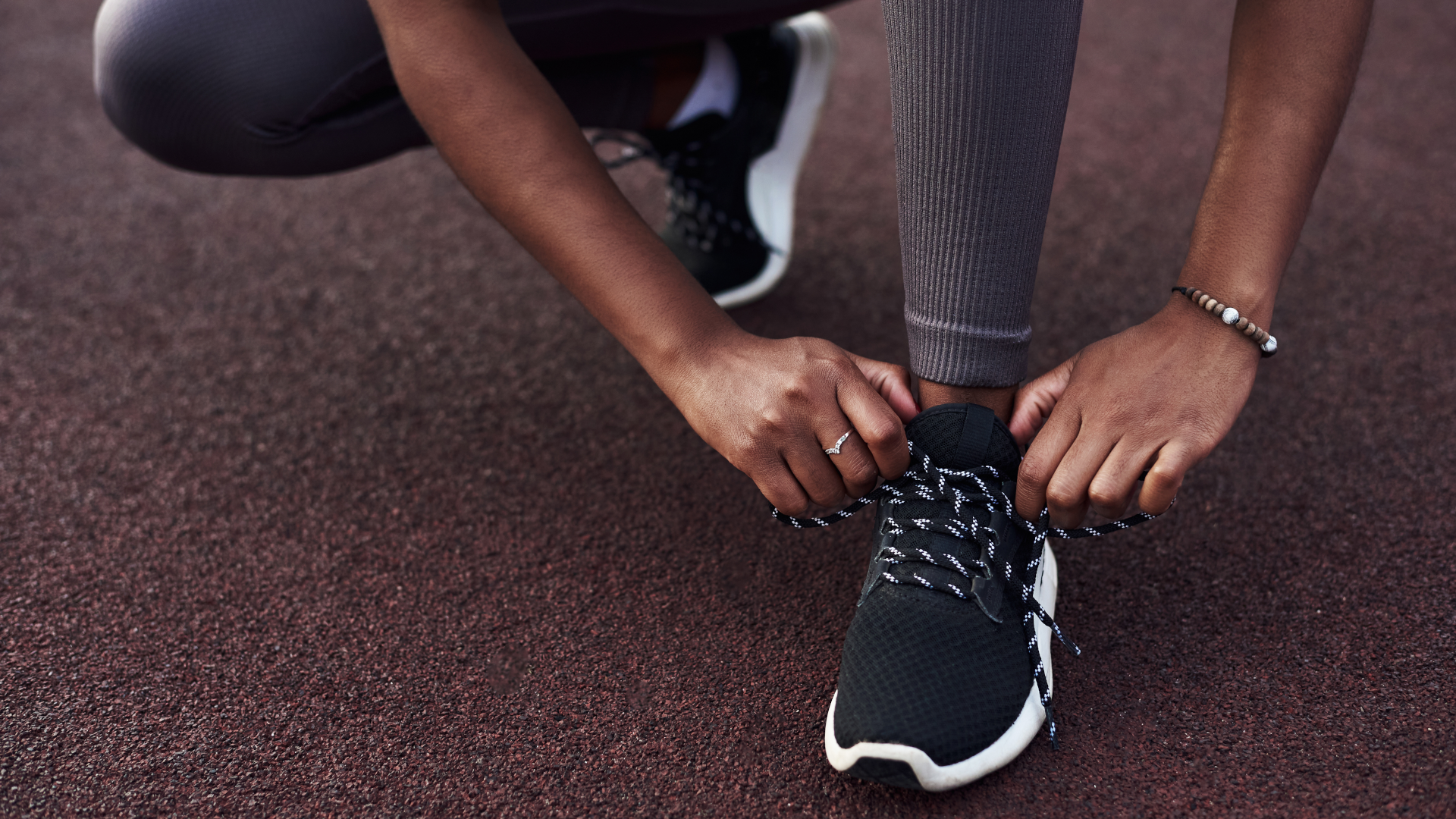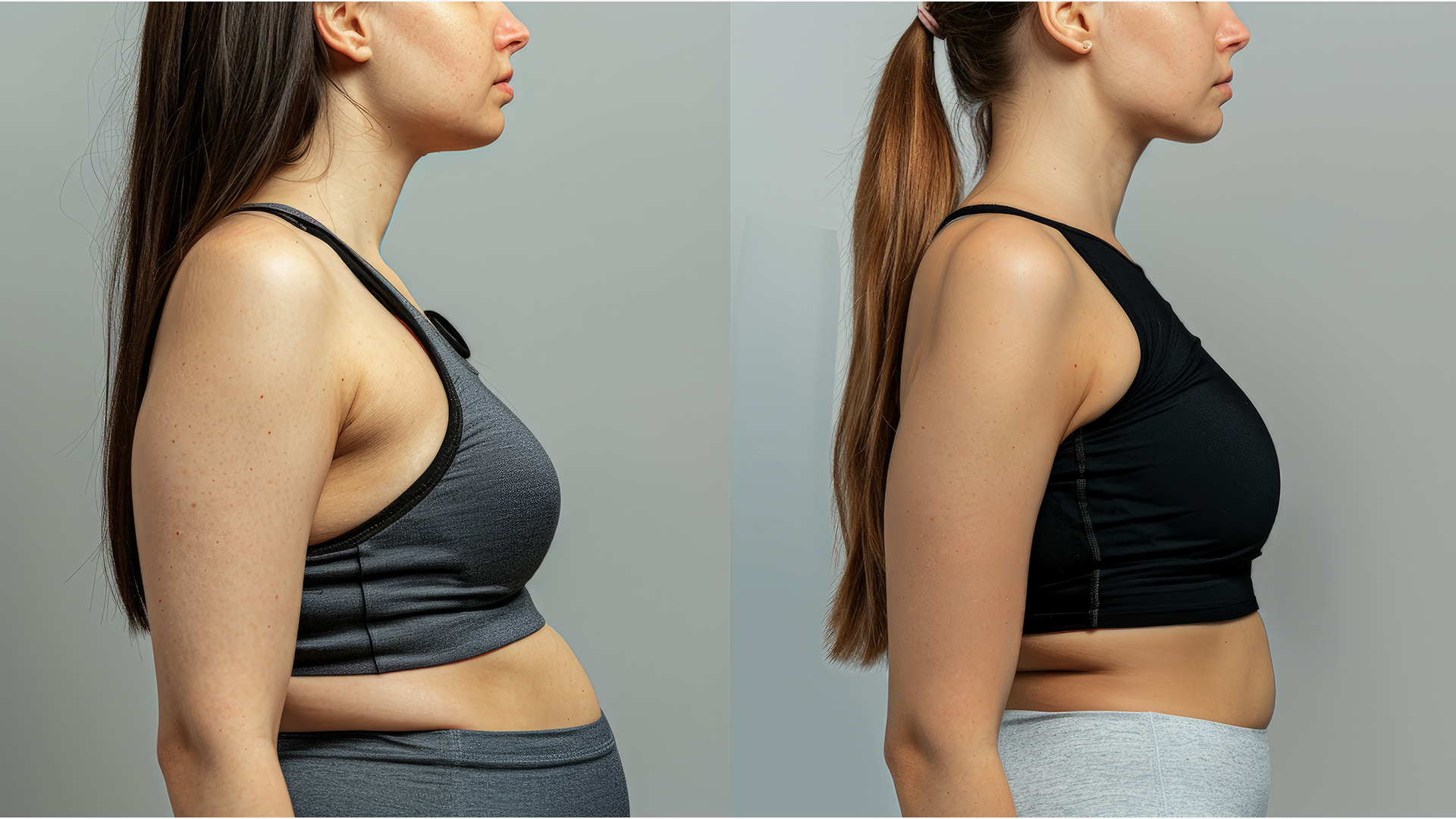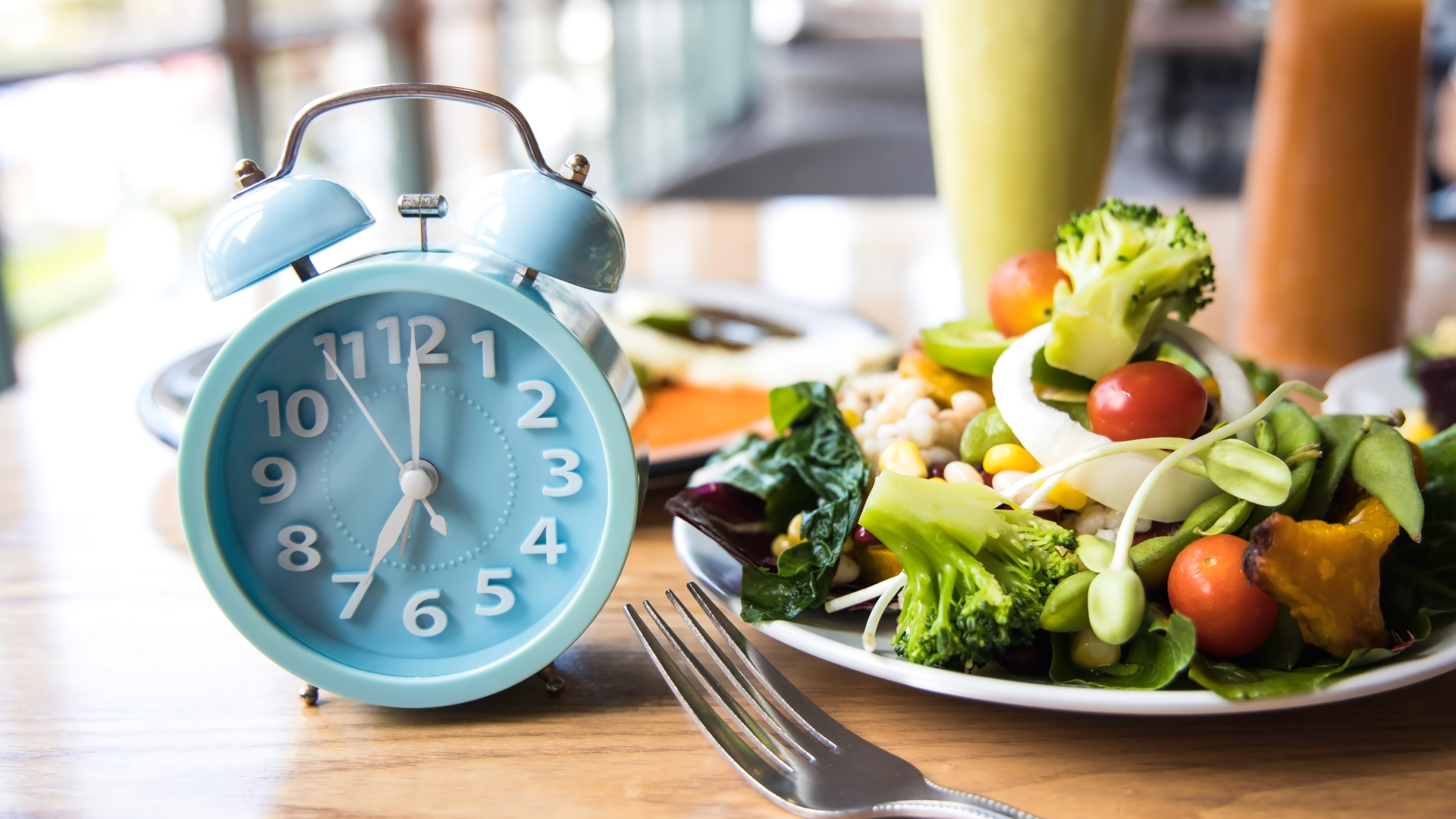What you’ll learn here… |
When it comes to weight loss, walking and running are considered the two most effective forms of exercise. But which one is better?
While both of these body-boosting approaches to weight loss can make you feel good and burn extra calories, knowing which one is right for you can seem like an uphill struggle.
But don’t sweat it. We’re here to dispel the myths, give you tips, and help you find your groove.
Ready? Let’s go.
Walking vs running for weight loss: Which is best?

If you’re looking to lose weight at a faster rate, running may be the best option because it tends to burn more calories over a set period of time.
The faster pace and higher-intensity nature of running makes it effective for toning muscle, burning fat, and improving your fitness levels.
But, here’s the thing…
Running isn’t for everyone. And, while it’s often overlooked as a bonafide exercise, walking is just as effective for losing weight in the long run as running.
Studies show that walking can lead to weight loss for nearly everyone. On the flip side, running is typically more effective at dropping pounds for men (on the whole).
For men and women in larger weight categories, walking and running are pretty evenly matched in terms of their pound-shedding capabilities.
In summary, running can lead to faster weight loss results—if you can stick at it. On the other hand, walking is a sustainable and enjoyable activity that suits almost everyone. And if you get the walking bug, you can make it a regular part of your routine—losing weight sustainably in the process.
For the best results, you should pick an activity that suits your current lifestyle and fitness level. Do what makes you feel good and you’ll keep up the good work.
Read: 4 ways to fall back in love with exercise
Now we’ve covered the weight loss essentials of running and walking, let’s look at the perks of each of these wildly popular physical activities.
The weight loss benefits of walking
A good walking workout offers a treasure trove of health benefits—including…
- A boost in your metabolism
- Better heart health
- Improved mood and motivation
- Less body fat
- Conditioned muscles
- Easy to sustain for longer periods of time
Read: Walking for weight loss: How to enjoy those daily steps and feel good
The weight loss benefits of running
Now, let’s ramp up the pace a little and explore the body-boosting health benefits of running…
- Regulates appetite and helps to curb hunger cravings
- Boosts mood, energy levels, and self-esteem
- Helps to build lean muscle mass and tone
- Improves heart health
- Increases metabolism
- Burns fat efficiently
As you can see, the benefits of walking and running crossover. And, when you think about it—once you build your confidence—you can enjoy both activities (if you want to—that is!).
Read: Why exercise is essential to improving your mental health
Walking vs running: How many calories can you burn?

In general, you burn more calories running compared to walking for the same amount of time. That’s because running is a higher-intensity exercise that commands more energy.
Here’s a quick breakdown of how many calories you’ll burn walking vs running…
Walking: Having a brisk stroll generally burns an average of 80 to 180 calories over 30 minutes.
Running: Picking up the pace and running will burn calories at twice the rate of walking. So, if you run for 30 minutes, you'll burn an average of 160 to 320 calories in around 30 minutes.
The exact amount of calories you’ll burn running vs walking will depend on a mix of factors—including…
Your weight: The heavier you are, the more calories you’ll burn per minute.
Your pace: The faster you run or walk, the more calories you’ll burn.
The terrain: Running or walking uphill burns more calories than flat surfaces.
Another thing to consider is that if you’re starting out on your weight loss journey, you’ll be able to keep up moderate-intensity exercise for longer periods of time—you’re also likely to stick to your goals.
So, pick a pace that works for you and gradually increase the intensity over time. That way, you’ll burn extra calories more consistently, losing more weight in the process.
Read: What is the best time to go for a walk?
How to find your ‘movement groove’ and get motivated

Whether you decide to walk, run—or both—here are some top tips to help you get motivated and stick to your body-boosting, pound-shedding exercise goals.
Start slow and steady
It’s a cliche, but slow and steady really does win the race. And, when we say ‘race’, we mean your ‘long term weight loss journey.’
So, in this context, race means pace. To lose weight sustainably and feel good, there’s no room for quick-fix fad diets (weight loss sprints). Looking at the bigger picture and treating your journey like a marathon will give you the sustainable results you deserve.
We hate to throw another well-trodden cliche into the mix…but try not to run before you can walk. Take small steps to begin with and gradually increase your efforts over time—that’s the way to win at weight loss.
Here are some tips to help you come out of the starting blocks at a steady pace…
- Find the times in your schedule when you can fit in a brisk stroll or a light jog. 20 minutes of walking or running per week will be just fine to begin with (as a rough guide)
- Set your walking or jogging pace and stick to it, only increasing speed and intensity when you feel ready. If you can’t regulate your breathing or hold a basic conversation at your current pace, slow things down.
- Don’t push yourself too hard. Remember, it’s all about striking a balance and playing the long game. Oh, and love yourself—you’re trying your best—and that’s more than good enough.
Read: Self-love and weight loss: How to love your body and still lose weight
Set realistic goals
At this point, you know that walking or running benefits your overall health. So, as long as you weave a little more movement into your day—you’ll be one giant step closer to achieving your weight loss goals.
Whether you decide to take up walking or running, the most important thing is to set realistic goals. When you’re looking to lose weight, consistency is key—and as long as you move regularly, the same benefits apply no matter what pace you’re going.
So, how do you set realistic goals, exactly? Here are a few tips for your consideration…
- Know where to start: See how far and how long you can walk or run right now. Set a pace and schedule that you know you can keep up.
- Pick a goal: Decide on something fun, like "I want to walk to the park three times a week with ease.” Stick to it and give yourself ample time to reach your goal.
- Measure your progress: Keep track of how far you go or how long you walk. Notch up your efforts once you feel comfortable enough to do so. Also, take a step back and dial your efforts down if needed.
- Set small goals: Start with a distance you 100% know can do and get a little better each week. Just a little at a time—bit by bit.
- Set a time: Give yourself a flexible number of weeks to reach your goal.
- Mix it up: Try walking or jogging at different ways or speeds so you don’t get bored.
Read: How often should you work out to lose weight?
Fuel well

Fueling properly is essential if you want to enjoy your walking or running sessions and stay on track with your weight loss efforts.
By getting your food intake right, you’ll have plenty of energy to attack your walks or runs with confidence. Fueling well will also make you feel great.
To get the most from your running or walking sessions and reach your ideal body weight, you should aim to fuel up at least an hour before you lace up those sneakers.
To stay energised for the rest of your day or evening (depending on when you like to get moving)—you should eat well (as well as hydrate) within an hour after your walk or run.
Eating your fill of carbs, proteins, and healthy fats will give you plenty of pep in your step while helping you to recover more quickly after your run or walk.
Here are some foods that will give you the fuel you need to succeed…
- Banana
- Peanut butter and wholemeal toast
- Berries
- Nuts, seeds, and legumes
- Chicken or turkey with rice and veggies
- Greek yoghurt and fruit
- Oats
- Veggie omelet
- Cottage cheese
Top tip: We know that sometimes, there are not enough hours in the day. If you need a quick hit of energy and the right blend of body-boosting nutrients, our PhenQ meal replacement shake will work wonders alongside a balanced diet. Give it a try.
Read: 10 essential power foods to fuel your walks (and runs)
Give yourself a break
To reach a healthy weight (and stay there), maintaining a positive mindset is key. Remember, losing weight the healthy way is a journey.
You’re not a robot, and life isn’t always plain sailing. So, allow yourself a treat from time to time, don’t beat yourself if you go off course a little, and give yourself a break if you need it.
As long as you’re consistent with your walking or running efforts and you make healthy lifestyle choices most of the time—you’ll get where you need to be.
Read: Manifesting weight loss: Tips and tricks to help you on your journey
Tap into community
When you’re trying to reach a healthy weight, you should never underestimate the power of community.
Having people around who can support and motivate you when it matters most will help you stay on track and shed those extra pounds with confidence. When it comes to weight loss, community really is a powerful tool—and something to tap into whether you decide to run or walk.
Take a stroll with friends, join a running or walking group, take an exercise class or sign up to a local fitness club to connect with weight loss warriors like yourself. It will make all the difference.
Read: 5 ways to get your weight loss back on track
It’s time to lace those sneakers up…

Running and walking both offer a wealth of health benefits that will help you reach your ideal body weight.
Remember, you’re an individual—there’s no one else like you on the planet. So, go at your own pace, set your own goals—and notch things up when you’re ready.
The first big step is to lace up those sneakers, head outside, and get moving. Follow the tips we’ve covered here, create an exercise program that works for you—and the rest will follow. You’ve got this.
Here’s the bottom line…
It doesn’t matter whether you enjoy low-impact movement, moderate-intensity activity or high-impact exercise, as long as you stay consistent and you’re burning calories at a higher rate than you consume them, you’ll get fit, feel good, and get to your target body weight. You’ll keep the pounds off, too!
It’s not really a case of walking versus running. It’s about turning up, enjoying yourself, and making the right lifestyle choices. Do that, and you’ll lose weight at a pretty brisk pace.
For more insider advice, check out our essential guide on creating a sustainable weight loss plan that suits you.




